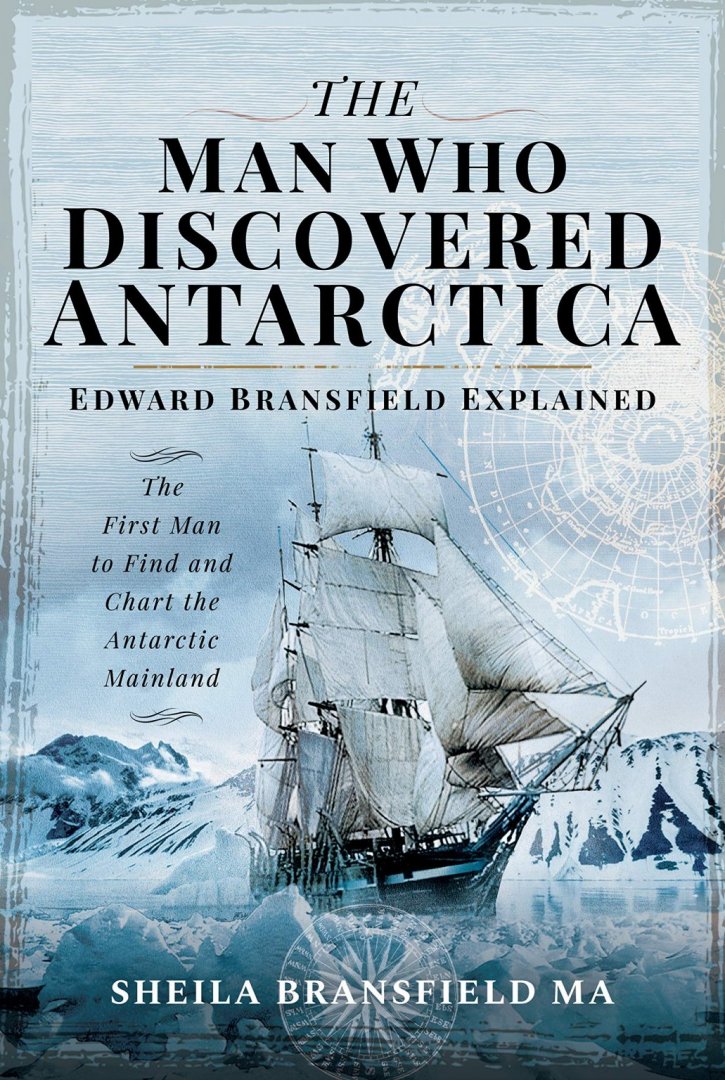The Man Who Discovered Antarctica: Edward Bransfield Explained
Sheila Bransfield
 A young Irish sailor pressed into the Royal Navy at the outset of the Napoleonic Wars might not be an expected candidate for achieving exploratory milestones in the service. This is, however, exactly the story that Sheila Bransfield seeks to bring to life in The Man Who Discovered Antarctica, a work which tracks this young man—Edward Bransfield—from the turn of the century Ireland across the seas of the globe, from ship to ship, and into their furthest southern reaches.
A young Irish sailor pressed into the Royal Navy at the outset of the Napoleonic Wars might not be an expected candidate for achieving exploratory milestones in the service. This is, however, exactly the story that Sheila Bransfield seeks to bring to life in The Man Who Discovered Antarctica, a work which tracks this young man—Edward Bransfield—from the turn of the century Ireland across the seas of the globe, from ship to ship, and into their furthest southern reaches.
This book belongs to a genre which seeks to restore to the collective memory someone who has dropped out of it, and Bransfield the author is uniquely qualified to do so—she has not just written about him but has also aided in other efforts to restore knowledge of his life, as in her efforts at preserving his grave. The book is bursting with information about the world through which Bransfield the subject moved, making it not just the narrative of an individual but of a life in and through time. This also makes it an interesting read for people with all levels of understanding around nineteenth-century maritime history, as the narrative is not confined just to him and does not assume vast knowledge on the part of the reader.
The abovementioned strengths of the book—following the trail of an important but also ordinary man through the upheavals of the first half of the nineteenth century—can at times also be its weakness. This is especially apparent in the first few chapters, which write on Bransfield’s early years in the Navy. Bransfield himself disappears from the text at times, subsumed under the actions of captains and commanders. A reading of this period his life as it might have been experienced by Bransfield himself, from the lower deck, might tie the context and the individual more closely. Sometimes contextual information may feel disjointed, as when a single paragraph about the abolition of the slave trade appears in the midst of describing HMS Royal Sovereign’s patrol of Cadiz, and might have been better suited for a note.
Where The Man who Discovered Antarctica truly picks up strength is around chapter 9 or 10, as Edward Bransfield begins to rise through the ranks of the navy and his life and the contextual information become more securely intertwined. Chapter 19, which covers Bransfield’s journey to the Antarctic aboard the two-masted brig Williams, is particularly rich. On the whole the book is a fast-paced and far-ranging narrative, expansive as the environment and person who together create the narrative. Bransfield the author’s absorption in her source material is apparent in more than just the information presented; at times the text takes on the cadence of a logbook, making the rhythm of seafaring life felt and not just learned through the course of the book.
Beginning with impressment and closing with his return to England following his Antarctic expedition, Edward Bransfield’s naval career is a fascinating story, and Sheila Bransfield’s book is the definitive treatment of his life.
- Barnsley: Frontline Books, 2019
- 6-1/4” x 9-1/4”, hardcover, xviii + 318 pages
- Photographs, notes, bibliography, index. $49.95
- ISBN: 9781526752635
Reviewed by Brooke Grasberger, Brown University
